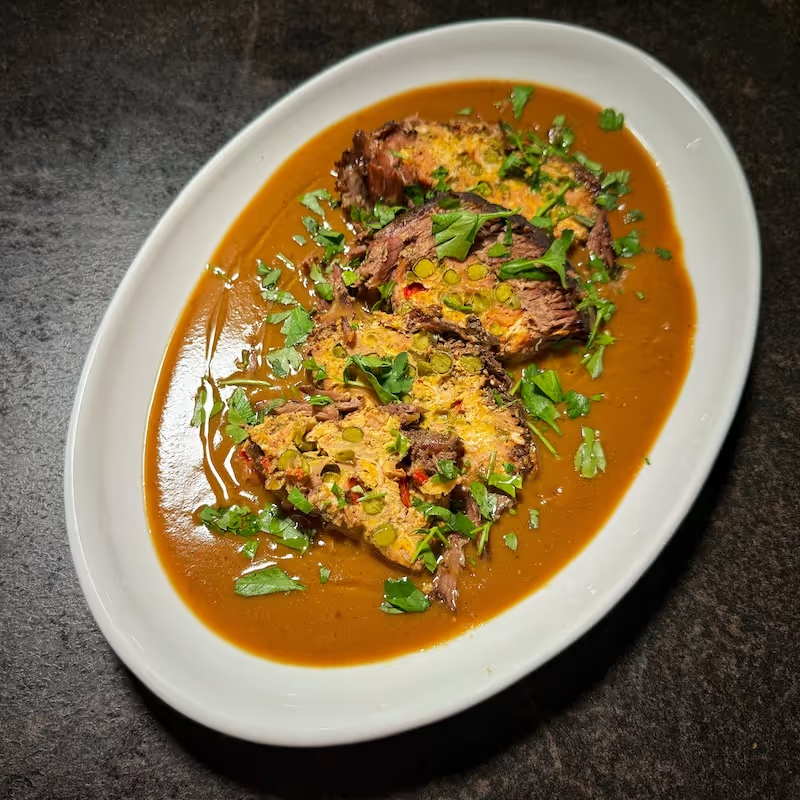From Tokyo to My Kitchen: Vegan Squash & Eggplant Stir-Fry
Vegan Japanese stir-fry with roasted butternut squash, eggplant, and broccoli in a glossy soy-sake glaze — cozy, modern, and full of autumn flavor.
Servings
Prep Time
Cook Time
Ingredients
Total Time
Ingredients
For the eggplant marinade:
- 1 eggplant, cut into large pieces
- 1 tbsp soy sauce
- 1 tbsp sake
- 1 tsp cornstarch
For the stir-fry:
- 200 g butternut squash, cut into 2.5–3 cm slices
- ½ onion, cut into wedges
- ⅓ carrot, sliced into rounds
- 1 bell pepper, cut into bite-sized pieces
- ½ head broccoli, separated into florets
- 2 tbsp olive oil (or neutral oil for stir-frying)
- 1 clove garlic, minced
For the sauce:
- 1 tbsp sake
- 1½ tbsp soy sauce
- 1 tbsp oyster sauce (use a vegan oyster or mushroom version)
- ½ tsp cornstarch (dissolved in 2 tbsp water)
- 1 tsp sugar
- Salt and pepper, to taste
For garnish (optional):
- 1 tsp toasted sesame seeds
- fresh chili
- fresh ginger
Equipment
Instructions
It's time to take another old recipe and adapt it to our modern needs and ways of cooking.
This time, I chose a Japanese recipe from a book I bought on our Japan trip earlier this year — My Gift: Special Recipes for You (1999), written by Harumi Kurihara.
I decided to pick a recipe from it that's perfect for autumn, one that feels both nostalgic and relevant.
And, just like every time I work with old recipes, my goal was to preserve authenticity while adapting it for today's kitchens and for the ingredients available where I live.
I'll admit — working with a Japanese text wasn't exactly easy, so apologies in advance if anything was lost in translation. However, I did my best to preserve the recipe's essence and give it a new, flavorful life. So here's what I did.
Instructions
- Marinate the eggplant: Slice the eggplant into 2-3 cm pieces.
- In a bowl, combine soy sauce, sake, and cornstarch. Add the eggplant pieces, toss well, and let marinate for at least 15 minutes.
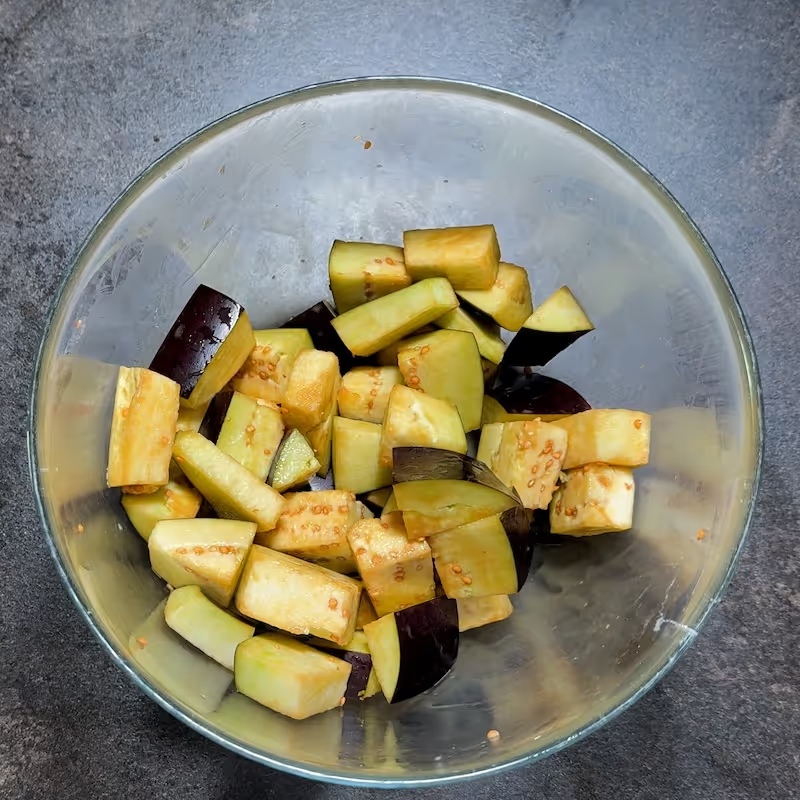
- Roast the butternut squash: Preheat oven to 200°C (400°F). Arrange the squash slices on a parchment-lined tray. Drizzle lightly with oil and a few drops of soy sauce. Roast for 12–15 minutes, until tender and lightly caramelized.
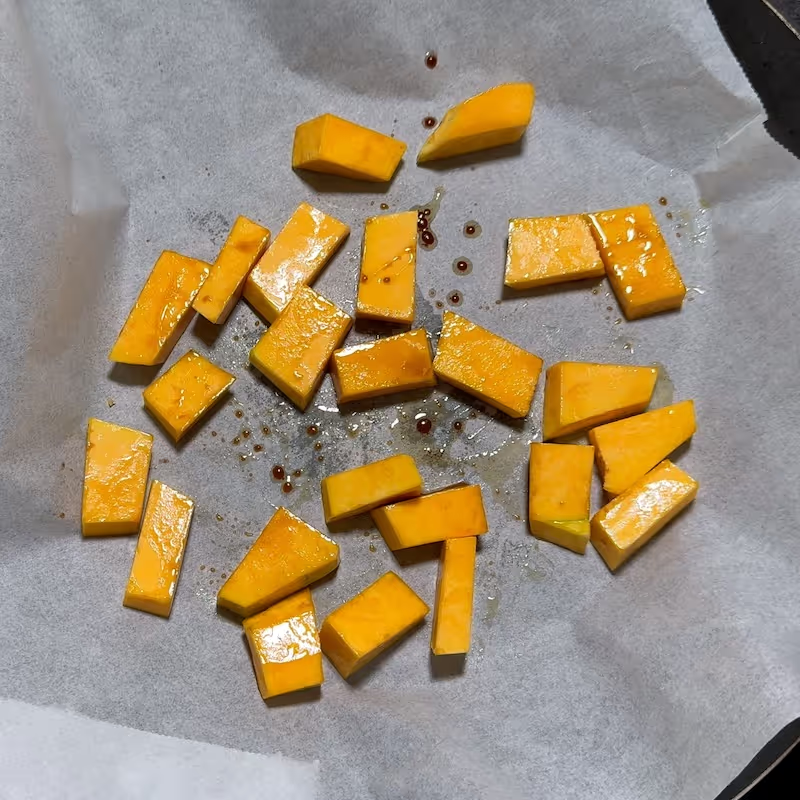
- Blanch the broccoli: Boil water with a pinch of salt, add the broccoli florets, cook for 1–2 minutes.
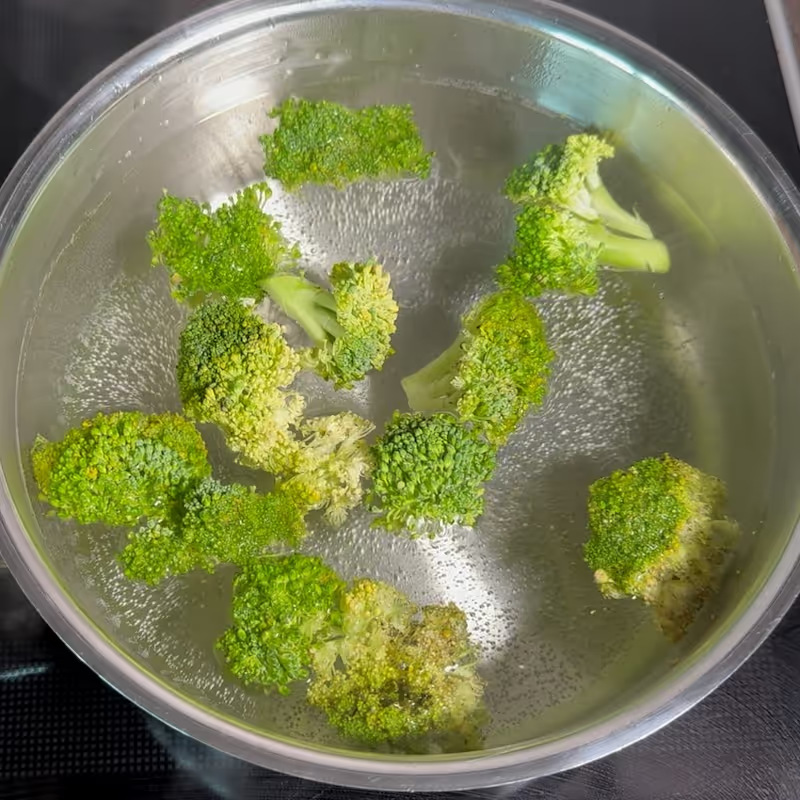
- Then drain and set aside.
- Prepare the vegetables: Cut the onion into wedges, the carrot into rounds, and the bell pepper into bite-sized pieces.
- Start the stir-fry: Heat the oil in a large pan or wok. Add garlic and sauté until fragrant. Add the onion and carrot, and stir-fry until they are slightly softened.
- Cook the eggplant: Add the marinated eggplant to the pan and stir-fry for 3–4 minutes until tender.
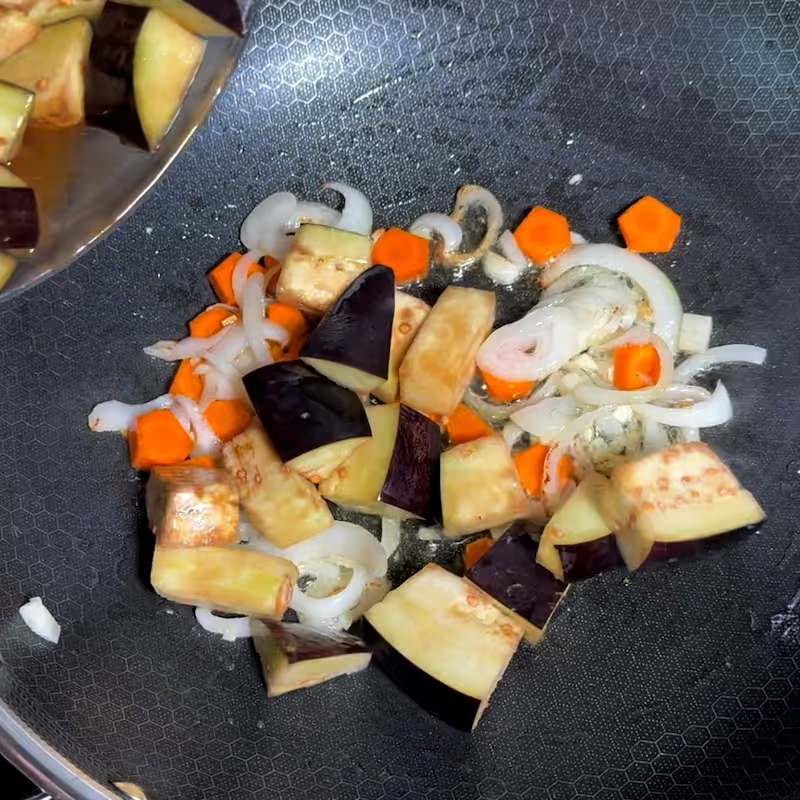
- Add vegetables: Stir in the bell pepper, roasted squash, and blanched broccoli. Toss gently to combine.
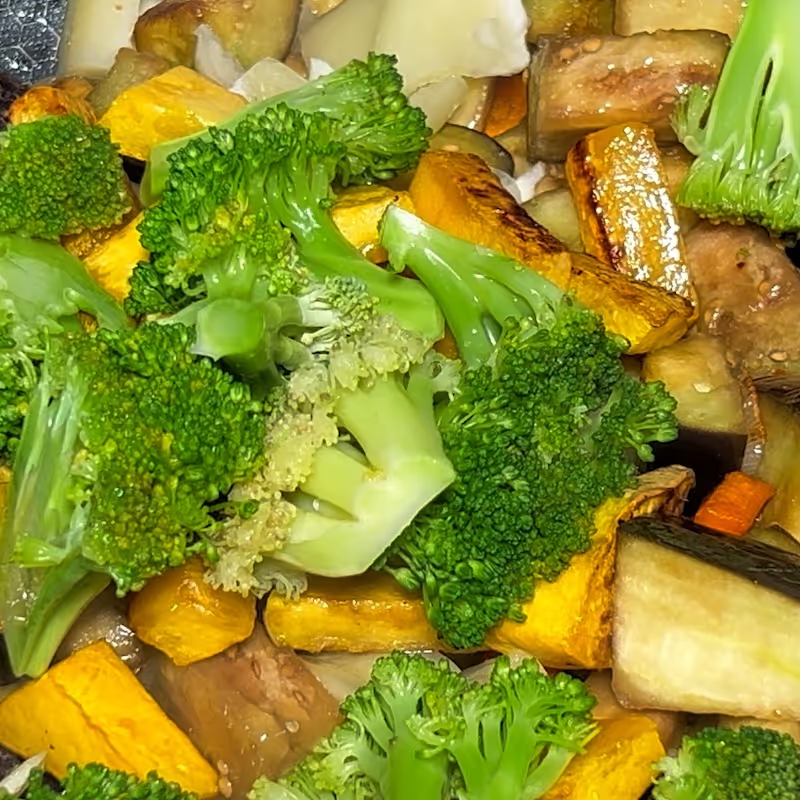
- Finish with the sauce: In a small bowl, mix sake, soy sauce, oyster sauce, sugar, and the cornstarch slurry.

- Pour into the pan and stir until everything is evenly coated and the sauce slightly thickens.
- Adjust seasoning with salt and pepper.
- Serve: Transfer to a serving dish, sprinkle with sesame seeds, fresh ginger, and some fresh chili, and enjoy hot.
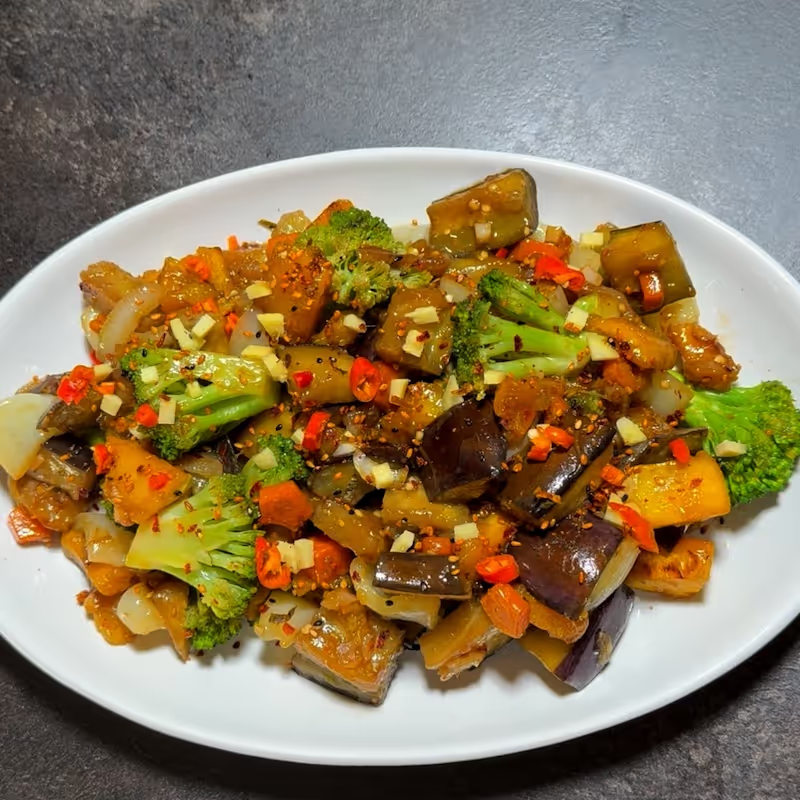
- Goes super nice with steamed rice.
Original Recipe
Before diving into our updated version, here's the original recipe from Harumi Kurihara's book, so you can try it first and compare.
Kabocha and Broccoli in a Sweet Vinegar Stir-Fry (Western-style)
Ingredients (serves 2):
- Kabocha squash … 200 g
- Onion … ½
- Carrot … ⅓
- Eggplant … 1
- Bell pepper … 1
- Broccoli … ½ head
- Olive oil … 2 tbsp
- Garlic … 1 clove
- White wine … 2 tbsp
- Consommé powder … 1 tsp
- Soy sauce … 1 tbsp
- Salt, pepper … to taste
How to make it:
- Cut the kabocha into 2 cm slices, wrap in plastic wrap, and microwave until tender.
- Separate broccoli into florets and boil briefly in salted water.
- Cut onion into wedges. Slice carrot into rounds. Cut eggplant into large pieces and soak in water. Cut bell pepper into bite-sized pieces.
- Heat olive oil in a frying pan, sauté garlic, then add onion and carrot.
- Add eggplant, kabocha, and bell pepper; continue stir-frying, then add broccoli.
- Pour in white wine, add consommé, soy sauce, salt, and pepper, and season to taste.
Historical & Cultural Background
When I first came across this recipe in Harumi Kurihara's My Gift: Special Recipes for You, I immediately recognized that sense of calm and warmth that defines Japanese home cooking.
It's the kind of cooking where vegetables take center stage, and every ingredient has its place.
This particular recipe — a sweet-vinegar vegetable stir-fry — captures a moment in Japan's late-20th-century culinary culture when Western influences were gently woven into traditional methods. Using consommé and white wine was considered stylish, even aspirational.
Harumi Kurihara, often referred to as Japan's "Martha Stewart," played a pivotal role in shaping this movement by demonstrating that home-cooked food could be both elegant and approachable.
At its heart, though, this dish is still deeply Japanese. Quick stir-frying, gentle layering of soy and sweetness, and an eye for colour and texture are all part of what makes Japanese vegetable dishes so unique. The use of kabocha (Japanese pumpkin) in particular signals the arrival of autumn — its earthy sweetness and silky texture make it one of Japan's most beloved seasonal ingredients.
In my kitchen, replacing it with butternut squash felt natural. It keeps the same comforting spirit while grounding the recipe in what's local and available. The textures — tender eggplant, roasted squash, and crisp broccoli — echo the Japanese idea of balance: soft meets firm, earthy meets bright.
So while this isn't a centuries-old temple recipe, it represents something I truly admire — the evolution of Japanese home cooking through curiosity and adaptation. This dish was meant to travel, to evolve — and now, it's doing just that in a different kitchen, thousands of kilometers away, carrying the same quiet grace.
What I Changed & Why
Making It Vegan and Modern
The first and most significant change I made was turning this into a vegan Japanese stir-fry. The original version used consommé powder and white wine, which I replaced with a vegan oyster sauce alternative to keep the umami depth while removing the animal products.
It's a small shift with big meaning — a way to keep tradition alive while aligning with today's plant-based cooking values.
Localising the Seasonal Ingredients
I swapped kabocha for butternut squash, keeping the same sweet, nutty flavour but using what's more accessible in my region. It's a reminder that good cooking doesn't depend on exotic ingredients, but on respect for what's around us.
Enhancing Texture Through Roasting
The original recipe suggested microwaving the squash — convenient, but a bit flat in flavour. I chose to roast the butternut squash, allowing caramelisation to bring out its natural sweetness and deepen the overall flavour. This single step transforms the dish into something far more satisfying.
Keeping the Spirit of the Original
Some things didn't need to change. The eggplant marinade — soy sauce, sake, and cornstarch — remains exactly as it was. It's simple, it works, and it feels deeply authentic.
Nutrition and Balance
This dish celebrates vegetable-forward cooking. Between the squash, eggplant, carrots, peppers, onions, and broccoli, you get a full spectrum of nutrients: beta-carotene, vitamin C, fibre, and antioxidants. By skipping the frying and sticking to a light stir-fry with olive oil, the recipe stays balanced — satisfying yet light.
Interesting Techniques and Flavor Notes
Marinating eggplant helps it soak up flavour while reducing oil absorption — a technique that's both traditional and smart. Roasting enhances the sweetness of the squash, while blanching broccoli keeps it bright and crisp. And the sake-soy balance adds that subtle umami depth that defines much of Japanese home cooking.
The Final Philosophy
Ultimately, I didn't reinvent the dish — I refined it. It's still recognisably Japanese, still honest and comforting, but it speaks a little more to how we cook and eat today: with awareness, creativity, and joy.
FAQ
Before you try it yourself, here are a few questions that might come up — and my honest answers.
Q: Can I use other vegetables?
A: Absolutely. Zucchini, mushrooms, or even snow peas would fit right in. Just keep the same cooking order to preserve texture balance.
Q: What can I use instead of sake?
A: You can replace sake with a dry white wine or even a splash of rice vinegar diluted with water. The flavour will shift slightly but still work beautifully.
Q: Is this recipe completely vegan?
A: Yes — as long as you use a vegan oyster sauce or mushroom-based substitute. All other ingredients are plant-based.
Q: Can I make this in advance?
A: Definitely. You can roast the squash, blanch the broccoli, and marinate the eggplant ahead of time. When ready to eat, just stir-fry everything and finish with the sauce.
Q: What should I serve it with?
A: This stir-fry pairs perfectly with steamed rice, but you can also try it with soba noodles or even quinoa for a fusion twist.
Conclusion
This recipe represents everything I love about cooking — taking something old, learning from it, and giving it new life. It's proof that even a 1999 cookbook can inspire a modern vegan stir-fry that fits right into today's kitchens.
The full video for this recipe is available below and on our YouTube channel. Don't forget to like, subscribe, and stay tuned for more of our 'Old Recipe, Modern Approach' stories.


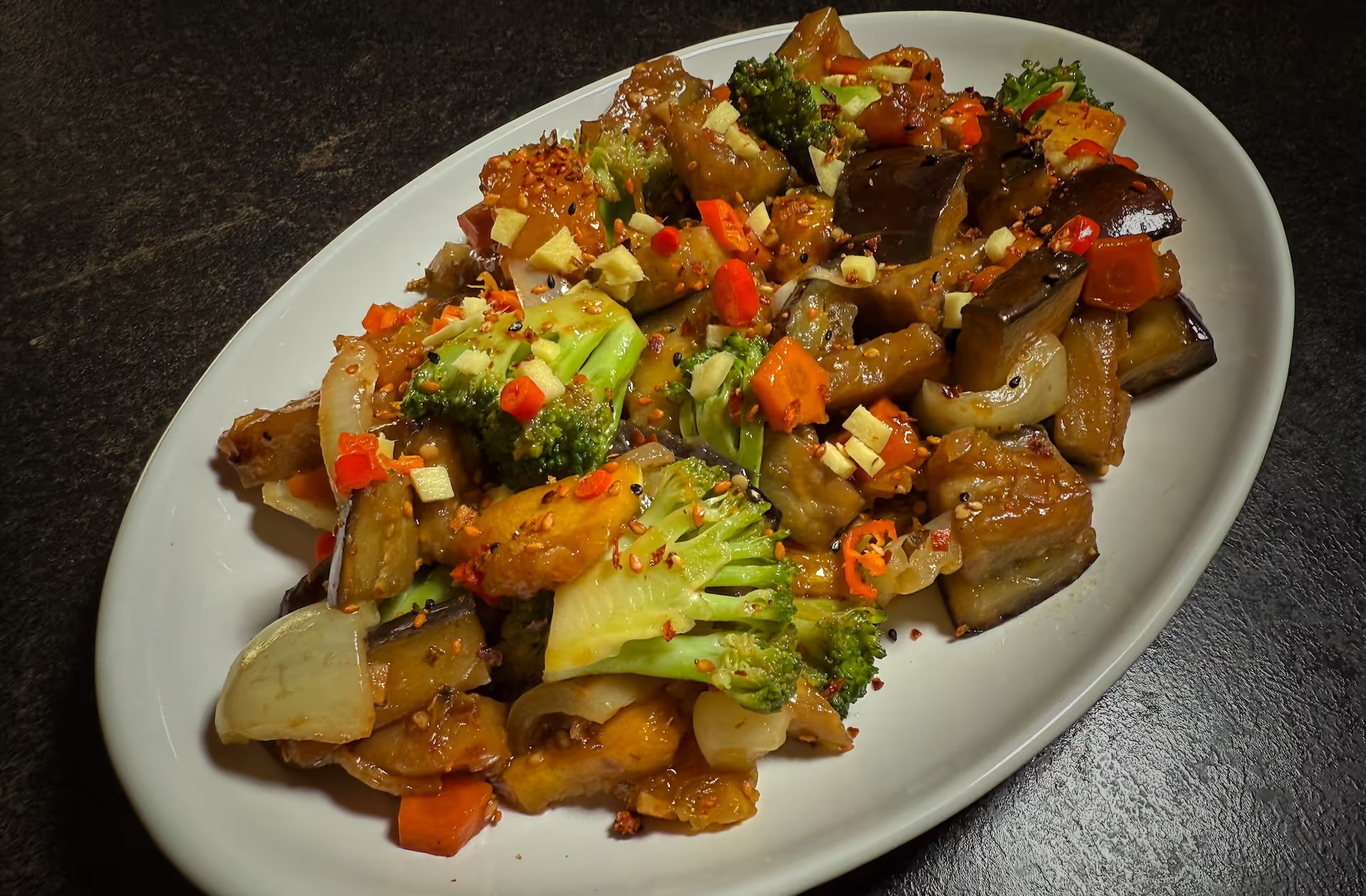

.svg)



